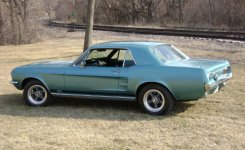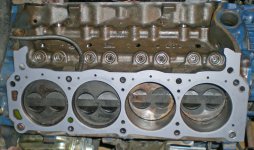My son Craig and I restored this 67 coupe a couple of years ago. He is studying in west Germany this semester. I would like to get this over heating problem resolved before he returns and my show season starts.
To start with the 289 2V runs absolutely great. We went to a show that was a 85 mile round trip [cool day] no problems. We went to another show 40 miles and on our return it got real hot but did not boil over, it was 90+ that day. Now we can drive 5-6 miles and it starts to get hot.
The engine was a low mile overhaul when we got it. When we first started there was a head gasket leak. We had the heads checked and resurfaced. We also used a new radiator. I have checked with a laser and it is not a gage problem. I was thinking of back flushing with a hose to see if there is a blockage. I thought some of you engine guys may have some ideas.
Marty
To start with the 289 2V runs absolutely great. We went to a show that was a 85 mile round trip [cool day] no problems. We went to another show 40 miles and on our return it got real hot but did not boil over, it was 90+ that day. Now we can drive 5-6 miles and it starts to get hot.
The engine was a low mile overhaul when we got it. When we first started there was a head gasket leak. We had the heads checked and resurfaced. We also used a new radiator. I have checked with a laser and it is not a gage problem. I was thinking of back flushing with a hose to see if there is a blockage. I thought some of you engine guys may have some ideas.
Marty
Attachments
Last edited:


